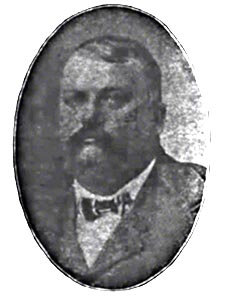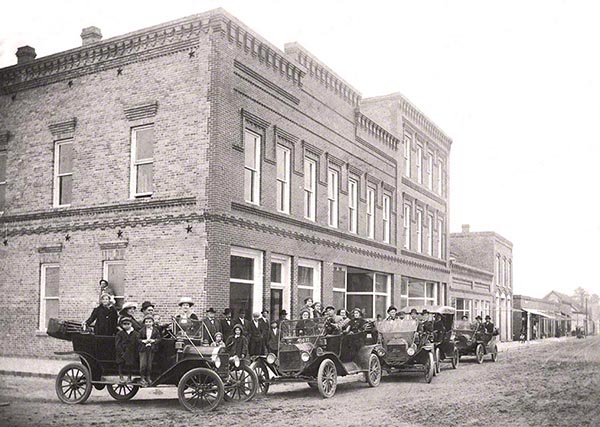A. L. Jones
Alford Lafayette Jones came to the Ashpole area with his partner Neill G. Wade as owners of the South Eastern Rail Road and Lumber Company. Jones was superintednent of the railroad and manager of the lumber company. Together they leased the undeveloped right-of-way from Elrod to Hub (Boardman) through Ashpole and secured labor from the N. C. Department of Prisons to clear the right-of-way and construct the track and bridges. Jones, originally from Liberty, NC, managed lumber mills in Buie and Purvis, both on the main line of the Wilmington & Weldon Railroad. He met Dr. John P. Brown, a surgeon for the railroad, who told Jones and Wade about the wonderful shortcut opportunity to the strawberry patches in the Chadbourn area.
Jones supervised the building of the railroad and the construction of the lumber company. The lumber company's first product was cross ties for the train track. On completion of the portion from Elrod to Ashpole, Jones became full-time manager and president of South Eastern Lumber Company and began acquiring timber rights. Along the way, Ashpole was incorporated as Union City in February, 1899. Dr. Brown established the Union City Land and Improvement Company and began to sell lots in town and Jones joined the plartnership along with Wade and other prominent people in the area. Their first project was to build the Ashpole Tobacco Warehouse, which was build with lumber from South Eastern Lumber Company.

Photo Credit: Lumberton Argus, 1904
The company began shipping dressed lumber to northern markets as soon as the railroad was completed. A. L. Jones sold his interests back to the company in 1903 but continued to live, work and invest in Ashpole. He continued operating his farms that he had acquired while a timber man and became known as quite the progressive farm operator. He began constructing residential housing for sale and rent and, in December 1912, began construction of the largest building in Fairmont which still sits on the southeast corner of Main and Thompson Streets.
The Jones Building was Fairmont's first mall/community center. It contained three sections on the first floor for retail establishments. The Bank of Fairmont located in the northernmost section and Harry Weinstein set up his dry goods establishment in the center section. Office space was located on the second floor along with an opera house located over the two northernmost sections. E. G. Floyd operated the opera house for a time, and doctors, lawyers and insurance agents filled the office space from the beginning. The Fairmont Masonic Lodge was located on the third floor.

Photo credit: Charles Williamson, Frances McNeill Williamson history collection
A. L. Jones died August 15, 1921 of kidney disease, leaving behind his wife, sons Ernest and Philip and daughters Bessie Jennings, Christine Thompson, Amic Jones and Catherine Jones. Jones died as the largest land owner and one of the wealthiest people in Fairmont. His son Ernest continued the family operations, eventually carving himself out a niche in the local tobacco business and later becoming mayor of Fairmont in 1947. He died while in office in 1949 of kidney disease.